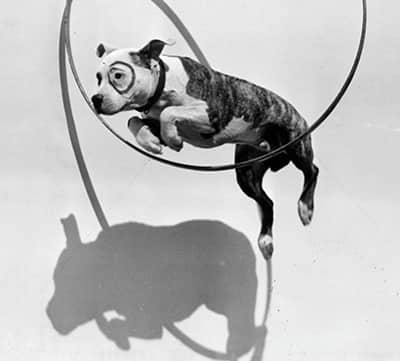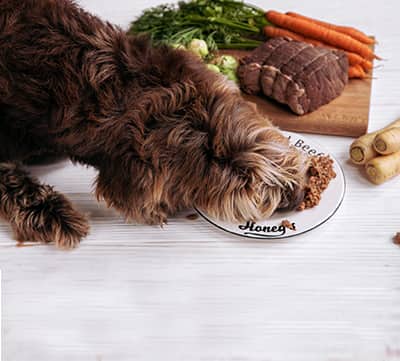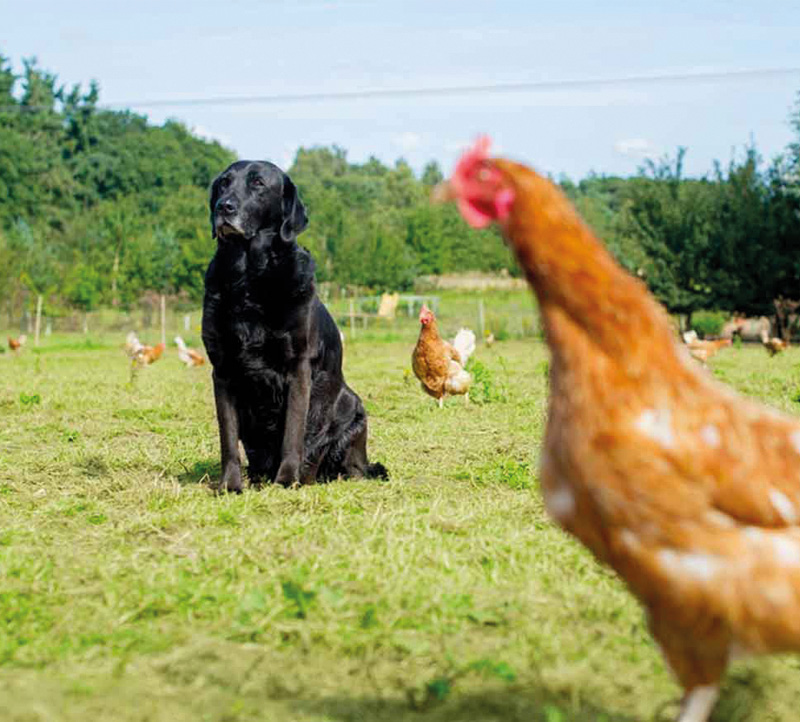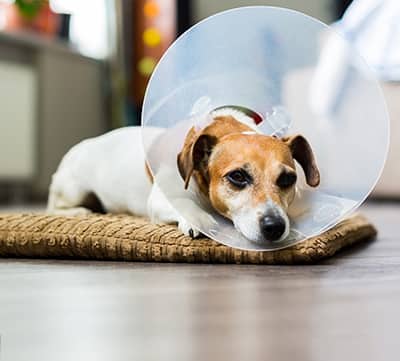Raw feeding, kidney stones and the purine problem
Mostly raw
With one or two exceptions (primarily where the dog’s immune system has been compromised), you will see that a raw food diet is always recommended.
This is because raw food is the easiest thing for your dog to digest and supports his or her immune system.
Where raw feeding isn’t recommended, you should not revert to processed food but simply cook the ingredients in the way prescribed.
Processed food is an underlying cause for as many as 9 out of 10 visits to the vet, and this includes expensive, so-called scientifically developed, brands.
A reminder about water
Water is treated with a great number of chemicals. Ill dogs are less tolerant of these chemicals, and so it is advisable to find a source of pure, clean water. This could be a mineral water (better from a glass bottle than plastic as plastic bottles left in the sun alter the chemical composition of their contents), rainwater or filtered water.
Why ill dogs do better on organic food
Intensively reared meat and intensively farmed vegetables, especially those imported from outside Europe, are often grown without the regulatory framework we are used to, and may contain a surprisingly high percentage of unnatural chemicals (everything from growth hormones to nitrates and from steroids to pesticides).
Furthermore, meat will include the residue of whatever the animal has been fed. This is particularly relevant in the case of grain-fed livestock and poultry, and grain is especially harmful to dogs. It is better, therefore, to feed organic food to ill dogs.
Free dietary advice
If you need dietary advice, don’t forget it is available, free of charge and without obligation, from us – call or email:
Kidney stones and the purine problem
If you have a Dalmatian, Beagle, Bulldog, Basset Hound, Cocker Spaniel, Bichon Frise, Miniature Schnauzer, Lhasa Apso, Miniature Poodle, Yorkshire Terrier, Dachshund, Newfoundland, Irish Terrier, Scottish Terrier or Irish Setter then you are probably only too aware that these breeds can have purine metabolism problems.
What are purines?
Purines are natural substances found in plant and animal cells that are vital to the chemical structure of genes. High levels of purine can be found in any food group (i.e. vegetables, fruit, meat and fish). Certain foods, such as kidneys, game, yeast, mackerel, herring, sardines and mussels, have particularly high levels of purine. Others, such as chicken, beef, lamb and non-acidic fruit, contain lower levels.
When cells die and get recycled in a dog’s body the purines in their genetic material also get broken down. Once completely broken down they turn into uric acid, which is important to good health because it serves as an antioxidant that protects blood vessels.
However, sometimes uric acid levels in the blood and other parts of the body can become too high. This happens, for instance, when the kidney isn’t functioning properly (as it is the kidney that helps keep blood levels of uric acid balanced) or where there is an excessive breakdown of cells. Although kidneys regulate the amount of purine (excreting what isn’t required), it is worth remembering that the cause of the problem lies in the liver where purine metabolism takes place.
The purine problems in dogs…
The breeds already mentioned above metabolise purine in a unique way ending up with excess uric acid. This in turn leads to urate stones. Worse, if treated with allopurinol to block enzyme-producing urates, dogs can end up with xanthine stones instead of urate stones.
Urate stones are radiolucent and thus can easily be missed, especially when in the kidneys as X-rays pass right through them, leaving no shadow, unlike other stones. It takes air contrast X-rays to show them up. But this cannot be done in the kidney and the stone cannot be felt in the kidney, either. Even ultrasound can miss them but CT (computerised tomography) scanning can pick them up.
If you have a Dalmatian
Dalmatians are one breed that’s particularly prone to urinary stones and if you have a Dalmatian or are interested in why then this site will be of interest: www.thedca.org/stonecharts.
How can diet help?
A raw food diet without organ meat and with none of the high-purine vegetables (such as cauliflower, peas, spinach, mushrooms and legumes) is generally excellent as a diet for all breeds with a purine metabolism problem. Commercial and homemade low-purine diets can make the condition worse rather than better.
In compromised dogs a high-fat diet can add to the problems by increasing urate formation, especially in the kidneys. So if you have a thin dog with a purine problem, consider increasing the frequency and size of meals rather than the fat level and check for hidden stones. We recommend feeding more easily digestible meat protein (chicken, for instance) and to avoid less digestible meats (beef, for instance).
Bear in mind that plenty of pure water is also important. The word ‘pure’ must be emphasised as some additions to water for purification and sterilisation purposes can change the urine pH or entire body chemistry, triggering crystal formation.
What else? ‘Table foods’ are out and so is anything with salt in it. With regard to diet, incidentally, this may require the addition of potassium citrates (for preventing calcium oxalate crystals) and sodium bicarbonate (for preventing cystine crystals). Always ensure that the diet does not have excessive amounts of vitamin C (ascorbic acid) added, as it acidifies urine, decreasing the risk of the most common forms of stones but increasing the risk of urates.
Finally, do remember to arrange regular urine checks to ensure that the pH stays alkaline and for the presence of either urate or xanthine crystals.
For more information and advice on any aspect of canine health and nutrition please contact Honey’s – we’re happy to help even if you never, ever plan to become a customer.
Email: info@honeysrealdogfood.com
Phone: 01672 620 260







